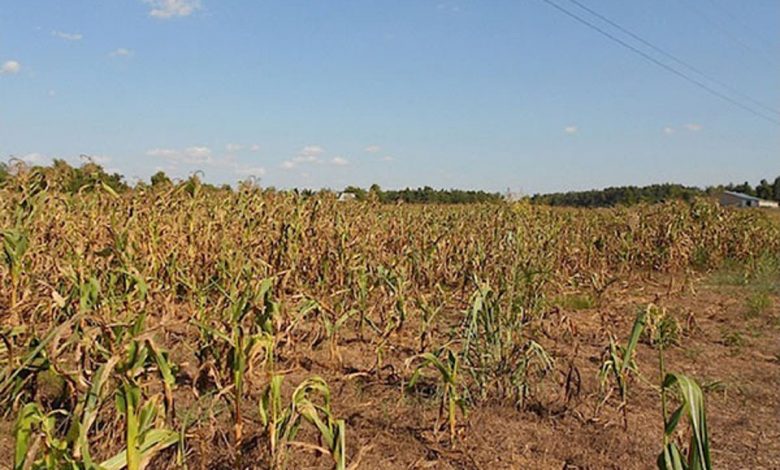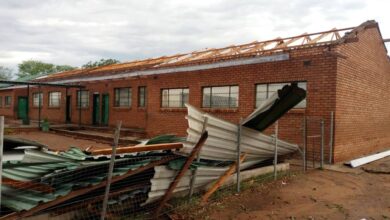Climate change worsens Zimbabwe’s economic dilemma

Climate change impacts can impair Zimbabwe’s economic growth since a prolonged dry period causes higher labour heat stress, which reduces productivity and affects the economy, according to the latest country climate and development report (CCDR).
The CCDR is a key diagnostic that integrates climate change and development, and one of the CCDR authors for Zimbabwe’s national report believes that development alone will not be sufficient to prevent climate change.
Speaking at the launch of Zimbabwe’s CCDR and Country Private Sector Diagnostic Report (CPSD) in Harare on Friday, senior economist Dominic Duval said that in developing the report they considered a variety of climate scenarios as well as two economic futures of Zimbabwe to understand the potential extremes.
“The thing about climate science is there’s a lot of uncertainty as there are many different takes on what climate might look like from 2050 to 2100. We took clusters of wet warm scenarios and dry hot scenarios to understand what the effect on Zimbabwe may be,” he said.
Duval stated that temperatures are likely to rise under all climate scenarios, and he examined the impact of that rising temperature on Zimbabwe’s economic structure and development rate.
“We also looked at the aspirational scenario, this is the double-digit growth – the upper middle-income scenario in line with Vision 2030 and we looked at the climate shocks and transmit them into those different economies to understand what is going on,” he explained.
According to the senior economist, this is where the uncertainty lies, as precipitation temperatures are expected to rise, resulting in significant vulnerability.
“The bad news is that under the hot dry scenarios the damages could be up to five percent of the Gross Domestic Product by 2050. We need to understand the impact in the hot dry scenario and what the adaptation requirements are to reduce economy-wide labour heat stress,” Duval said.
This labour heat stress is seen in outdoor work such as agriculture and artisanal mining.
“The fact that temperatures will go up, will cause more labour heat stress, which will reduce productivity. There will also be damages that need to be reduced through adaptation to crop and livestock revenues.”
Duval said there will be a need to mix hydropower with other renewable energies because hydropower output will face negative shocks.
“We need to identify ways to adapt to reduce the impact on roads and manage inland flooding in dry scenarios,” he said.
The senior economist said labour heat stress may still exist in a wet warm scenario, although it would be slightly less severe. However, there will still be a need to decrease the burden on highways and bridges, and the impact on inland flooding may be slightly worse, with soil erosion increasing.
“There are also labour health shocks that need to be addressed and there is still a livestock revenue shock even in this wet warm scenario,” Duval said.
Duval said under a hot dry scenario, things appear more detrimental compared to a wet warmer scenario.
“Thinking ahead, the weather forecast in the next 25 years very likely shows more droughts,” he said but added that Zimbabwe’s mitigation story was “encouraging” because the country is a low net emitter.
“So it’s really about opportunity. The whole world is trying to transition to renewable energy and decarbonize and this is where the opportunity comes.”
The senior economist said between mitigation and adaptation, the CCDR proposed three areas of multi-sectoral action.
“The first is greening the mining industry and supporting the mining industry with low emissions, resilient infrastructure. The mining sector is proposed as an anchor investor for renewable energy, reviving rail services to transport mining products because there’s a global energy transition to be resilient in the supply chain world,” Duval said.
“Secondly, supporting conservation agriculture, landscape restoration, food and water security. We need to think about how to innovate, irrigate and mechanize to adapt to climate change.”
“Thirdly, protecting and growing human capital.”
The senior economist said Zimbabwe’s climate and development priorities are to link the opportunity to supply minerals to the global energy transition with rebuilding low-carbon, resilient infrastructure.
“Start with low-cost, no-regrets actions. We are fiscally constrained now but we can use those extra resources to build resilience and transition to a growth path then use additional resources to build low carbon resilience,” Duval summed.






